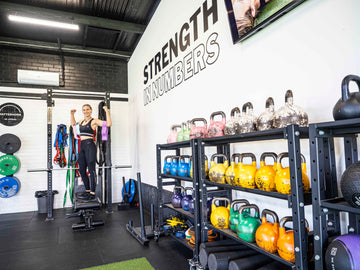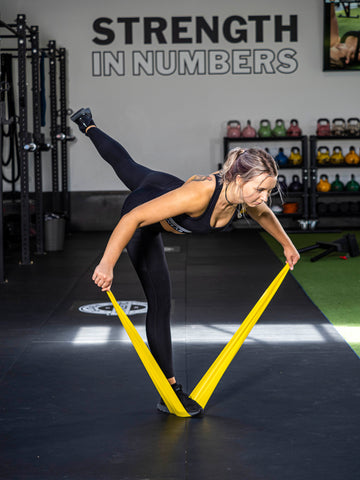For many people, deciding between fitness equipment is difficult. Should we use weights? Should we use machines? What about bodyweight movements, like push-ups? What if we want to use all of them? The truth is that these different exercise options don't necessarily have to be mutually exclusive. If your goal is to get the best results from your training, then combining traditional weight training equipment with resistance bands is the best way to go. Here's why:
Why Use Bands After Weights?
The goal of adding resistance bands to your weight training routine is to effectively increase the workload of your muscles. A standard barbell or free weight will allow you to train against the resistance provided by your own body weight. The reason is that, when it comes to physical load, the only "variable" we have control over is our own body weight.
However, traditional weight machines at the gym give us the ability to either use more weight or more of our own body weight, depending on whatever it is we're trying to do.
The problem is that, at the end of the day, it's your body that has to move the weight. So adding any extra weight to the exercise simply makes it more challenging. This is why adding bands or other forms of extra resistance can be extremely beneficial for experienced weight trainers. They allow us to make our main lifts harder, which means we don't have to lift as much weight.
Bands with Weights for Power
Many weight lifters today use bands with a powerlifting routine. Many different bands range from light and thin to thick and heavy. The bands are used to help increase the lifts' difficulty and replace the extra weight that would otherwise be used.
For example, if a lifter was performing heavy squats. She would use the thin bands to help replace the weight of the barbell, making the lifts more difficult. The more weight the lifter could squat under with the bands, the heavier they could go without.
Bands with Weights for Muscle Gain
The downside to adding resistance bands to your weight training routine is that bands can be limiting, and they don't have a lot of versatility. For example, since the bands add resistance all the way around the lift, it's impossible to use them for isolated lifts, like bicep curls.
However, for experienced lifters who are looking to target specific muscle groups, this may not be such a bad thing. Because bands are relatively inflexible and can be used for only one kind of lift, it forces the lifter to focus on the muscle being worked rather than the weight being moved.
For example, the T-bar row is a great substitute for machines. The exercise itself is simple: the lifter sits on a bench, straps on the bands, and lifts the bar. Since the weight moves in only one direction, it allows the lifter to focus on the back muscles and not their arms or legs.
Bands to Target the Hips
Bands are also a great way to target the hips, glutes, and hamstrings. If a lifter was looking to specifically train these muscles, they could easily use bands to add resistance. Since these movements use bodyweight only (such as pull-ups), it would be impossible to add weight without using a pulley system.
Using bands is a great way to add challenge to exercises that the lifter may not have the strength to do without them. For example, a person who has never done a pull-up before could do so by attaching bands to a pull-up bar, gradually increasing the difficulty as they gain strength.
Conclusion
It's important to remember that you can't use resistance bands alone to train. If you want to get the most bang for your buck, you need to combine resistance bands with weights. By combining the two, you will be able to increase your workout range while being able to target more muscle groups than if you were just using bands on your own.
POWERBANDS® is here to provide fitness professionals and health clubs with a trusted gold standard resistance band offering. Through our quality products, we make it our mission to improve your quality of life through movement, resistance, recovery, among others. Get your own set of resistance bands today by ordering from the POWERBANDS® online store.








